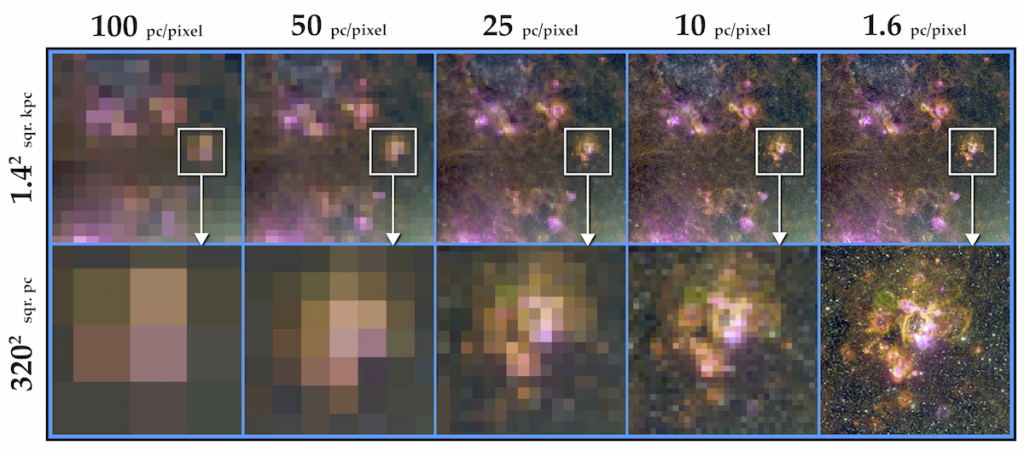The Local Volume Mapper (LVM) is an optical, integral-field spectroscopic survey that will target the Milky Way, Small and Large Magellanic Clouds, and other Local Volume galaxies. LVM will make use of new telescopes and newly built spectrographs that cover a wavelength range of 3600-10000 Å, with spectral resolution R~4000 (based on the DESI spectrograph design). This new LVM instrument will collect roughly 20 million contiguous spectra over 2,500 square degrees of sky, including the midplane of the Milky Way, Orion, and the Magellanic Clouds from Las Campanas Observatory, Chile in SDSS-V. Funding allowing, we plan to include the Northern Milky Way as well as M31 and M33.

Science Goals
Galaxy formation can be understood as a self-regulating process, with energy exchange between stars and interstellar gas occurring at numerous points in space and time. LVM will map the interstellar gas emission of the Milky Way and Local Group galaxies with unprecedented spatial resolution: reaching sub-parsec resolution in the Milky Way, 10 parsec resolution in the Magellanic Clouds, and down to <100 parsec resolution out to distances of several Mpc. As an example, the following image shows the core of Orion (left) sampled at the resolution of LVM (right).

LVM is thus well-positioned to study star formation and the physics of the interstellar medium in great detail by distinguishing individual star formation knots and the filamentary structures and shock networks between them. LVM will be able to connect studies across the parsec (molecular cloud) and kiloparsec (galaxy-wide) scales; this connection is fundamental to understand the physics governing star formation, the structure of the interstellar medium, the baryon cycle, and ultimately, the evolution of galaxies.
The current projected survey area that we will cover within SDSS-V includes a contiguous survey of the midplane of the Milky Way from LCO, probes of the ISM at high galaxtic lattitude extending to the pole, and finally the Magellanic Clouds.

More details on the Local Volume Mapper and an extended description of its science goals can be found in the SDSS-V White Paper SDSS-V: Pioneering Panoptic Spectroscopy.
Contact information
For more information, contact the SDSS-V Program Head for the Local Volume Mapper, Niv Drory (University of Texas at Austin).
